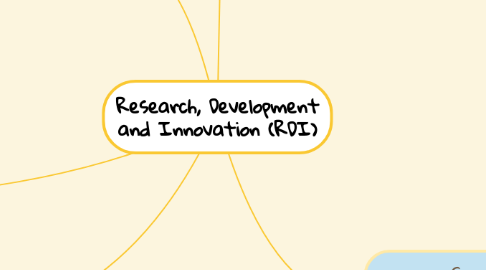
1. Objectives of RDI projects
1.1. Contribute to the advancement of knowledge and maintaining Europe at a world-class level in science and technology
1.2. Accelerate the development of innovative, enhanced, more efficient and higher value added products, processes or services that meet the demand of customers and users
1.3. Strengthen the cooperation between research, innovation, education and business to create more jobs and increase economic competitiveness
1.4. Promote the mobility of researchers and associated exchange of ideas
1.5. Help address societal challenges in a number of fields
2. Risk Assessment
2.1. Demand analysis
2.2. Design
2.3. Administrative and procurement
2.4. Construction
2.5. Operation
2.6. Financial
3. RDI infrastructure is the generic name for investment project that ared designed and operated according to very different specifications.
4. RDI categories
4.1. Infrastructures for fundamental research
4.2. Infrastructure for applied research and experimental development
4.3. Innovation infrastructure.
5. Types of analysis
5.1. Demand analysis
5.1.1. implies identifying the need for an investment, which is expressed by the current and future demand.
5.1.2. In demand analysis, there are three target group drive the demand for the RDI project.
5.1.3. Target Groups
5.1.3.1. Businesses
5.1.3.2. Researchers, young professionals and students
5.1.3.3. Target population and general public
5.2. Option Analysis
5.2.1. is aims at identifying the most promising project option that can achieve the expected objective given a certain demand.
5.2.2. Alternative options
5.2.2.1. Strategic option
5.2.2.2. Technological options
5.2.2.3. Location options
5.2.2.4. Architectural options
5.3. Financial Analysis
5.3.1. has involved investment, operation and maintenance costs.
5.3.2. Categories of financial costs
5.3.2.1. Investment cost
5.3.2.2. Operation
5.4. Economic Analysis
5.4.1. Typical Benefits
5.4.1.1. Benefits for Business
5.4.1.2. Benefits for researchers, young professionals and students
5.4.1.3. Benefits for the target population and general public
5.4.2. Valuation of benefits to businesses
5.4.2.1. Establishment of spin-offs and start up
5.4.2.2. Development of new/improved products and processes
5.4.2.3. Knowledge spill overs to non-user businesses
5.4.3. Valuation of benefits to researcher and students
5.4.3.1. The value of scientific publications
5.4.3.2. The benefit of human capital development
5.4.3.3. The benefit of social capital development
5.4.4. Valuation of benefits to target population and the general public.
5.4.4.1. Reduction of environmental risks
5.4.4.2. Reduction of health risks
5.4.4.3. Cultural effects for visitors
5.4.5. Benefit and costs of RDI infrastructures in a regional perspective
5.4.5.1. Externalities
5.4.5.2. Direct impact on regional competitiveness
5.4.5.3. Wider regional effects
5.4.6. Future methodological developments

